Introduction
The development of a safe and effective vaccine against severe acute respiratory syndrome-coronavirus-2 (SARS-CoV-2) is critical for ensuring worldwide public health, as well as potentially ending the coronavirus disease-2019 (COVID-19) pandemic. Four vaccine candidates have finished or are currently in phase 3 trials in the United States (Table 1), with many more ongoing internationally. These vaccines were developed using various technology platforms, including ribonucleic acid (RNA), deoxyribonucleic acid (DNA), recombinant protein, inactivated virus, live attenuated virus, and vector-dependent vaccines (1). There was tremendous excitement in November when both Pfizer and Moderna announced encouraging preliminary results of >90% efficacy with their RNA vaccine candidates against SARS-CoV-2. Insofar as RNA vaccines are relatively new and may be unfamiliar to the cardiovascular community, here, we will briefly review 5 things cardiologists should know about COVID-19 RNA vaccines so that they are better prepared to care for their patients.
| Developer | Pfizer/BioNTech | Moderna | AstraZeneca/Oxford | Janssen |
|---|---|---|---|---|
| Candidate | BNT162b2 | mRNA-1273 | AZD1222 | JNJ-78436725 |
| Subject age | 12 yrs or above | 18 yrs or above | 18 yrs or above | 18 yrs or above |
| Enrollment | 43,998 (estimated) | 30,000 (estimated) | 40,051 (estimated) | 60,000 (estimated) |
| Recruitment status | Recruiting | Finished recruiting | Recruiting | Recruiting |
| Platform | RNA | RNA | Non-replicating adenovirus engineered to express spike protein | Non-replicating adenovirus engineered to express spike protein |
| Dosing | Two IM doses of 30 μg, 3 weeks apart | Two IM doses of 100 μg, 4 weeks apart | Two IM doses of 5 x 1010 viral particles, 4 weeks apart [Some participants in UK received a half dose (2.5 x 10^10 viral particles) first dose] | Single IM dose of 5 x 1010 viral particles |
| Trial number | NCT04368728 | NCT04470427 | NCT04516746 | NCT04505722 |
| Notes | Concluded trial; reported 95% efficacy on 11/18/20 | Interim analysis reported 94.5% efficacy on 11/16/20 | Interim analysis reported 62 (full dose)-90% (half dose first dose) efficacy on 11/23/20 | Briefly paused due to unexplained illness in a participant. Currently resumed after FDA safety review. |
FDA = U.S. Food and Drug Administration; IM = intramuscular; RNA = ribonucleic acid.
What Is an RNA Vaccine? How Is It Different From Traditional Vaccines?
Traditional vaccines use pathogens (live, attenuated, or inactivated), their components (recombinant protein, subunit, polysaccharide, or conjugate), or toxins (toxoid) to elicit host immune responses. Although these approaches provide durable protection against various diseases and have had significant public health benefits, their major limitation in the current global pandemic is that they can be challenging to develop and manufacture at scale quickly. RNA vaccines, in contrast, provide a platform that can be designed and mass-produced rapidly. Although no RNA vaccines have been approved to date for human use, some have finished phase 3 enrollment, most notably 2 candidates targeting SARS-CoV-2 from Moderna (Cambridge, Massachusetts (mRNA-1273) and Pfizer/BioNTech (New York, New York; Mainz, Germany)(BNT162b2).
Two types of RNA vaccines have been developed thus far: self-amplifying or replicon RNA vaccines and nonreplicating messenger RNA (mRNA) vaccines. The current phase 3 trial candidates from Pfizer and Moderna use nonreplicating RNAs that are directly injectable. Additional candidates that use RNA replicon vaccines are in earlier phase clinical trials. Because RNA-degrading enzymes quickly destroy naked RNA, RNA delivery into host cells requires packaging into lipid nanoparticles for improved stability in the body. The active component of RNA vaccines is synthetic mRNAs that encode a disease-specific antigen that elicits antigen-specific immune responses. Both Moderna’s mRNA-1273 and Pfizer/BioNTech’s BNT162b2 encode the spike protein of SARS-CoV-2, which binds angiotensin-converting enzyme 2 and is responsible for viral entry into cells. Preclinical studies established that antibodies binding to the spike protein, primarily its receptor-binding domain, neutralize the virus by preventing it from binding to angiotensin-converting enzyme 2 on host cells. The synthetic mRNAs are modified so that they can be efficiently translated by the cellular translation machinery. The nascent translated protein undergoes post-translational modifications and can be secreted or alternatively presented on the cell surface by the cell’s major histocompatibility complex, which allows the host to mount a targeted immune response directed against the viral protein (2). Foreign RNA also stimulates the innate immune system (interferon type I response) that, in turn, boosts the adaptive immune response. After translation, the synthetic mRNA is degraded by host enzymes so that it does not interact with the host genome.
The RNA vaccine approach has several practical advantages. First, RNA can be produced in the laboratory from a DNA template, using readily available materials that are faster to prepare than conventional vaccine production requiring the use of chicken eggs or other mammalian cell expression systems engineered to produce protein antigens. With RNA vaccines, the specific amino acid sequence that determines the antigenic protein’s immune specificity can be easily adapted to the pathogen’s genetic code. This inherent versatility has contributed to the unprecedented speed of a candidate vaccine’s entering a phase 1 trial (March 16, 2020, for Moderna’s mRNA-1273), <10 weeks after the viral genome sequence became available (on January 10, 2020).
RNA vaccines, however, are not without potential shortcomings. As no RNA vaccine has yet been approved, we do not know the long-term safety and efficacy of this new technology. Both Pfizer’s and Moderna’s candidates require 2 rounds of injections to be effective. Multiple injections could create issues with noncompliance and logistical issues to ensure that each person receives 2 injections of the same RNA vaccine. Also, the temperature requirements for vaccine stability are potentially problematic. Pfizer/BioNTech’s BNT162b2 requires storage and shipping at ultralow temperature (−94°F), whereas Moderna’s mRNA-1273 requires −4°F. Once thawed, they are stable in a refrigerator for 24 h (Pfizer) to 7 days (Moderna) or at room temperature for 2 h (Pfizer) to 6 h (Moderna). Because of the stringent cold temperature requirement, freezer farms are currently being built for vaccine storage and distribution. However, many hospitals, particularly those in rural areas, may not have ultra-low-temperature freezers, which could create inequities in distributing the vaccine. Pfizer is reported to be developing special shipping containers to meet potential logistical challenges.
How Do the Side Effects and Safety Profiles of RNA Vaccines Compare With Traditional Vaccines?
Vaccine side effects are common but are generally not severe. Traditional vaccines using egg cultures can provoke allergic reactions secondary to the egg proteins. The in vitro production of RNA vaccines circumvents this problem. Neither Moderna’s nor Pfizer/BioNTech’s candidate demonstrated severe adverse events in respective phase 1 studies, and no pre-specified trial halting rules were met (3,4). Fever or chills were reported in 40% to 60% of study participants in both phase 1 trials. Almost all participants reported some systemic symptoms after 2 doses. However, the reported adverse events (fatigue, fever, chills, headache, myalgia, nausea, and pain) are mostly (>80%) mild or moderate and are generally similar to side effects from other vaccine classes (5). Of note, side effects from the RNA vaccines do not appear to include common cardiopulmonary symptoms such as chest pain, dyspnea, lower extremity swelling, or palpitations. It is also important to recognize that the safety issues that temporarily halted COVID-19 vaccine trials were not associated with either of the lead RNA vaccine candidates (Table 1). From a long-term safety perspective, RNA vaccines appear to be safe; as they are not made with pathogens, they are noninfectious. Furthermore, synthetic mRNAs do not integrate into the host genome, so the risk for long-term mutations in host DNA should not occur. However, 1 of the unintended consequences of RNA vaccines is that the foreign mRNA strands may elicit an unintended immune reaction (interferon type I response), leading to fevers or chills. These reactions can be minimized by modification and purification of the RNA molecules during manufacturing.
What Are the Known Unknowns With RNA Vaccines?
There are currently no approved RNA vaccines for use in humans. Accordingly, the risk and safety profile of RNA vaccines in different groups of individuals remains unclear. Subgroup analysis from a larger dataset and post-marketing surveillance may be required. Furthermore, both ongoing RNA vaccine phase 3 trials excluded pregnant or breastfeeding women, immunocompromised or immunosuppressed patients, and children <12 years of age (<18 years for mRNA-1273). As noted earlier, some mRNA vaccine platforms induce potent type I interferon responses associated with inflammation and the potential to develop autoimmunity. Further study will be required to define the safety and efficacy of RNA vaccines in vulnerable populations. Another unknown is whether the immune response with RNA vaccines will confer long-term immunity against SARS-CoV-2 or whether the protection will be short lived.
Which Phase 3 RNA Vaccine Trials Are Ongoing?
As of this writing, 2 RNA vaccine phase 3 trials are concluding in the United States.
Moderna’s mRNA-1273 is a lipid nanoparticle–encapsulated, nucleoside-modified RNA encoding the viral spike protein. Two intramuscular doses are administered 4 weeks apart. mRNA-1273 entered the phase 3 COVE (A Study to Evaluate Efficacy, Safety, and Immunogenicity of mRNA-1273 Vaccine in Adults Aged 18 Years and Older to Prevent COVID-19) trial on July 27, 2020 ( NCT04470427). This is a randomized, double-blind, U.S. trial that has enrolled >30,000 subjects. Demographics include 37% nonwhite subjects, 47% women, and 25% >65 years of age. Primary outcomes are COVID-19 occurring 14 days after the second dose, adverse events leading to withdrawal, solicited local and systemic adverse reactions, and unsolicited adverse events. On November 16, 2020, an interim analysis of 95 confirmed cases revealed the vaccine to be 94.5% effective in preventing COVID-19. Eleven of the subjects (all in the placebo group) had severe disease. The safety data after a median follow-up of 2 months are expected before the end of 2020.
Pfizer/BioNTech’s BNT162b2 is also a lipid nanoparticle–formulated, nucleoside-modified RNA vaccine. The RNA encodes full-length viral spike protein, whereas its cousin candidate BNT162b1 encodes the spike protein’s receptor-binding domain. BNT162b2 outperformed BNT162b1 in its safety profile. The phase 2/3 trial was also started on July 27, 2020, and is a 120-site international study with a majority of subjects from the U.S. ( NCT04368728). The vaccine is given intramuscularly in 2 doses 3 weeks apart. More than 43,000 subjects were enrolled. Reportedly, 42% of enrolled subjects globally and 30% in the United States are from racially diverse backgrounds. The primary efficacy endpoint is confirmed COVID-19 diagnosis 7 days after the second dose. On November 18, 2020, Pfizer/BioNTech concluded their Phase 3 trial and reported a 95% efficacy in preventing COVID-19 from an analysis of 170 confirmed cases. Efficacy in those age 65 or above was >94%. No serious safety concerns were reported. After a median follow-up of 2 months, the safety data are expected by the third week of November 2020.
What Will Happen Next?
The U.S. Food and Drug Administration (FDA) requires COVID-19 vaccines to be at least 50% more effective than placebo, comparable with flu vaccines over the past decade (efficacy ranging from 19% to 60%). In contrast, the World Health Organization has set a higher benchmark of 70% efficacy and protection duration for 1 year. The >90% efficacy reported by both developers in their interim analyses clearly meets and exceeds worldwide regulatory efficacy standards if confirmed in the full trial results. To ensure a vaccine’s safety, the FDA also mandates a median follow-up of 2 months after the last vaccine dose to assess a vaccine’s risk-benefit profile. Pfizer reported no serious safety concerns and has submitted application for an emergency use approval (EUA) from the FDA, which will allow immediate use of the vaccine. FDA has announced an advisory committee meeting on December 10, 2020 to discuss the vaccine candidate. Moderna is expected to conclude its Phase 3 trial and apply for the EUA in the upcoming weeks. At that point the companies will seek emergency use approval from the FDA, which will allow immediate use of the vaccine. Operation Warp Speed is a partnership among the U.S. Department of Health and Human Services, the U.S. Department of Defense, and the private sector that aims to deliver 300 million doses of COVID-19 vaccines by January 2021. Operation Warp Speed has been providing support to vaccine developers to expedite their research and development. By mass-producing the vaccines while being tested, the timeline between the demonstration of efficacy and the vaccines’ availability is greatly diminished (6). The Department of Defense is providing logistical support and will facilitate distribution of the vaccine.
Vaccines will be effective only if people are willing to be vaccinated. Given the politicization of the COVID-19 pandemic, it is not at all surprising that many people may be hesitant to receive an FDA-approved vaccine, let alone a type of vaccine that has never been used before in humans. To this end, we hope that this brief primer will be useful to cardiologists who are caring for patients during the pandemic and who may be asked by their patients whether they should take the vaccine against SARS-CoV-2.
Author Disclosures
The authors have reported that they have no relationships relevant to the contents of this paper to disclose.
Abbreviations and Acronyms
| COVID-19 | coronavirus disease 2019 |
| DNA | deoxyribonucleic acid |
| mRNA | messenger ribonucleic acid |
| RNA | ribonucleic acid |
| SARS-CoV-2 | severe acute respiratory syndrome coronavirus 2 |
Footnotes
The authors attest they are in compliance with human studies committees and animal welfare regulations of the authors’ institutions and Food and Drug Administration guidelines, including patient consent where appropriate. For more information, visit the Author Center.

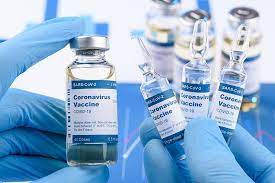
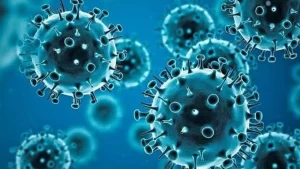
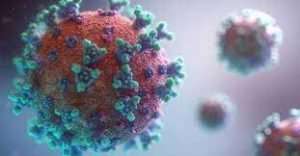
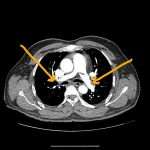
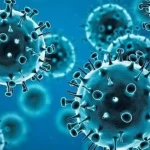


He Makes Money Online WITHOUT Traffic!
Most people believe that you need traffic to profit online…
And for the most part, they’re right!
Fact is.. 99.99% of methods require you to have traffic.
And that in itself is the problem..
Because frankly, getting traffic is a pain in the rear!
Don’t you agree?
That’s why I was excited when a good friend told me that he was profiting, but with ZERO traffic.
I didn’t believe him at first…
But after he showed me the proof, it’s certainly the real deal!
I’m curious what your thoughts are.
Click here to take a look >> https://bit.ly/3mOAfVp
Please view it before it’s taken down.
Great info and right to the point. I don’t know if this is truly the best place to ask but do you guys have any ideea where to employ some professional writers? Thanks 🙂
Nice read, I just passed this onto a colleague who was doing a little research on that. And he actually bought me lunch because I found it for him smile So let me rephrase that: Thanks for lunch! “He who walks in another’s tracks leaves no footprints.” by Joan Brannon.
You can certainly see your skills within the work you write. The arena hopes for more passionate writers like you who aren’t afraid to mention how they believe. At all times go after your heart. “What power has law where only money rules.” by Gaius Petronius.
It’s hard to find knowledgeable people on this topic, but you sound like you know what you’re talking about! Thanks
hello!,I like your writing very a lot! share we keep in touch extra approximately your article on AOL? I require an expert on this space to solve my problem. May be that is you! Looking forward to see you.
Absolutely
After research a couple of of the weblog posts on your web site now, and I really like your approach of blogging. I bookmarked it to my bookmark web site listing and will likely be checking again soon. Pls take a look at my web page as well and let me know what you think.
fantastic issues altogether, you just gained a new reader. What might you suggest about your publish that you simply made some days in the past? Any positive?
You made a number of nice points there. I did a search on the subject and found mainly persons will go along with with your blog.
I love your blog.. very nice colors & theme. Did you create this website yourself? Plz reply back as I’m looking to create my own blog and would like to know wheere u got this from. thanks
consultant did it
But wanna comment that you have a very nice internet site, I love the design it really stands out.
I am impressed with this internet site, very I am a big fan .
Good day! Do you know if they make any plugins to safeguard against hackers? I’m kinda paranoid about losing everything I’ve worked hard on. Any tips?
I¦ll immediately snatch your rss as I can not in finding your email subscription hyperlink or e-newsletter service. Do you have any? Please allow me understand in order that I could subscribe. Thanks.
My brother suggested I might like this blog. He was totally right. This post actually made my day. You cann’t imagine just how much time I had spent for this information! Thanks!
Reading your article has greatly helped me, and I agree with you. But I still have some questions. Can you help me? I will pay attention to your answer. thank you.
What’s Taking place i’m new to this, I stumbled upon this I have found It absolutely helpful and it has aided me out loads. I hope to give a contribution & aid other users like its helped me. Great job.
I will immediately take hold of your rss feed as I can not to find your email subscription hyperlink or e-newsletter service. Do you have any? Please allow me recognize so that I may subscribe. Thanks.
You have made some good points there. I checked on the internet to learn more about the issue and found most individuals will go along with your views on this website.
You made some good points there. I looked on the web for additional information about the issue and found most individuals will go along with your views on this site.
We absolutely love your blog and find most of your post’s to be exactly I’m looking for. Would you offer guest writers to write content for yourself? I wouldn’t mind producing a post or elaborating on a lot of the subjects you write related to here. Again, awesome site!
We’re a group of volunteers and opening a new scheme in our community. Your website provided us with useful info to work on. You have performed an impressive process and our whole neighborhood might be grateful to you.
Howdy! This is my 1st comment here so I just wanted to give a quick shout out and say I really enjoy reading your articles. Can you suggest any other blogs/websites/forums that deal with the same subjects? Appreciate it!
Thanks for sharing. I read many of your blog posts, cool, your blog is very good. https://www.binance.com/sv/register?ref=V2H9AFPY
Your article gave me a lot of inspiration, I hope you can explain your point of view in more detail, because I have some doubts, thank you.
You ought to take part in a contest for one of the most useful blogs
on the internet. I most certainly will highly recommend this
web site!
Remarkable issues here. I am very happy to see your article.
Thanks a lot and I am having a look ahead to contact you.
Will you kindly drop me a mail?
Your article helped me a lot, is there any more related content? Thanks! https://accounts.binance.com/pl/register-person?ref=PORL8W0Z